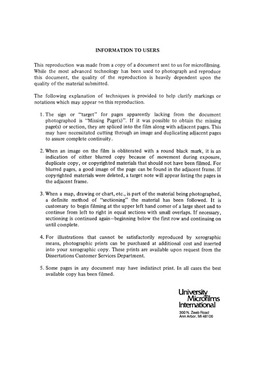| dc.contributor.author | Nigh, Linda Jane, | en_US |
| dc.date.accessioned | 2013-08-16T12:28:54Z | |
| dc.date.available | 2013-08-16T12:28:54Z | |
| dc.date.issued | 1983 | en_US |
| dc.identifier.uri | https://hdl.handle.net/11244/5132 | |
| dc.description.abstract | Interviews with dual-career couples found that the benefits of the dual-career pattern were seen to be improved self esteem, and a strong sense of identity for both partners, increased empathy, and the enabling of growth in each other. Two incomes were seen as a benefit, but the primary emphasis seemed to be on psychological tasks. The biggest problem was having too little time and energy for a demanding life-style. Younger couples appeared much more equalitarian and more at ease with their life-style than the other groups, while the middle age group seemed to be struggling to change their previous traditional socializations. The older group appeared to respect each other's careers, but follow more traditional lines in regard to domestic tasks. The results are discussed with respect to the absence of statistical significance for the MANOVAs, and implications of other findings for the clinician. | en_US |
| dc.description.abstract | No significant differences were found on any five of the MANOVAs. Univariate ANOVAs were conducted and discussed in the text. However, correlations among a measure of General Marriage Satisfaction (GMS) and the intimacy variables showed that men's GMS was highly correlated with recreational intimacy while women's GMS was highly correlated with emotional intimacy. When correlations were done among levels, men in dual-career marriages were found to be different in that emotional intimacy was highly correlated with GMS. | en_US |
| dc.description.abstract | The differences in perceived and expected intimacy in five areas (emotional, social, sexual, intellectual, and recreational) and differences in reciprocal compatibility (inclusion, control, affection) were examined among dual-career marriages, career-worker marriages and traditional marriages across three age groups using the Personal Assessment of Intimacy in Relationships (PAIR) (Schaefer & Olson, 1977) and the Fundamental Interpersonal Relations Orientations-Behavior (FIRO-B) (Schutz, 1958). Each of these areas was analyzed within a 3 x 3 multivariate analysis of variance design. A total of 135 couples were assigned to one of nine groups on the basis of men's ages and wife's career level. Men's careers were in the fields of higher education, psychology, social work, business management, and law. | en_US |
| dc.format.extent | vi, 103 leaves ; | en_US |
| dc.subject | Psychology, General. | en_US |
| dc.title | Intimacy and reciprocal compatibility in dual-career marriages. | en_US |
| dc.type | Thesis | en_US |
| dc.thesis.degree | Ph.D. | en_US |
| dc.thesis.degreeDiscipline | Jeannine Rainbolt College of Education | en_US |
| dc.note | Source: Dissertation Abstracts International, Volume: 44-02, Section: B, page: 0594. | en_US |
| ou.identifier | (UMI)AAI8314782 | en_US |
| ou.group | Jeannine Rainbolt College of Education | |
